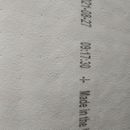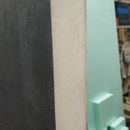Identifying this Brand of Polyiso Insulation
darko9000
| Posted in General Questions on
Hi,
By any chance anybody recognize this polyiso manufacturer that I have in the attached pictures. I have some 2-inch, 4 foot by 8 foot sheets that I purchased locally and I can’t figure out who is the manufacturer. I would like to get some more information on it, I want to use on the exterior of my house that I’m currently building. You can see that one side is dark brown almost black and the other side is white. Both sides have Some kind of a paper coating and what it looks like small pin holes. Am I correct into assuming that this board would be considered vapor permeable and not a vapor barrier? I’m assuming for vapor barrier one side would have to have some kind of metal foil, so it completely blocks the vapor. By any chance anybody recognizes this board manufacturer or has any more information on it?
Thanks
GBA Detail Library
A collection of one thousand construction details organized by climate and house part
Search and download construction details












Replies
That looks like the polyiso that goes under membrane roofs.
Thanks,
By any chance you know who would be manufacturer?
I am trying to determine would this be considered a vapor permeable or a vapor barrier product. I think that some polyiso that is considered vapor barrier has foil on one side
I suspect that it is semi vapor permeable. But whatever it is can be OK if you use the right interior side vapor retarder. Some info here.
It's roofing polyiso, with what is known as a "fiberglass mat facer". It's a little lower density compared to the foil faced stuff, and is a little lower R value per inch (around R11 for a 2" thick sheet). The facer is vapor permable, but you won't get a lot of moisture migration through 2" thick polyiso regardless of the type of facer it has.
I don't recognize the manufacturer. From some things I've seen in the past, I suspect some runs are contract manufactured by someone for someone else's special project, since I've seen mysterious brand-less polyiso in the past.
There is no reason to not use this polyiso in your walls if that's what you're planning on doing.
Bill
There are many types of roofing polyiso, this looks like type 1, which is not vapor permeable.
https://www.iko.com/wp-content/uploads/sites/6/2013/10/41-PolyisoInsuClass.pdf
Also take care with roofing polyiso, most is not meant to be exposed to weather, they need to be protected by a WRB when used in a wall.
Thanks everybody for your help,
I wanted to use this in the wall so basically looking from the outside it would be brick, one inch air gap, Polyiso, zip sheeting, 2x6 wall framing with open cell spray foam. I'm located in North Carolina.
As far as being exposed to weather, I'm planning to install this on the exterior and the brick would be installed within 30 days so the only exposure to sunlight would be within those 30 days, I'm hoping that wouldn't be a problem?
Try mineral wool or high density fiberglass batts in the wall instead of spray foam. Seal the exterior polyiso layer as an air barrier (I’d install the interior drywall airtight too). You’ll end up with similar performance for less money, and you can use the savings to improve other things elsewhere.
Bill